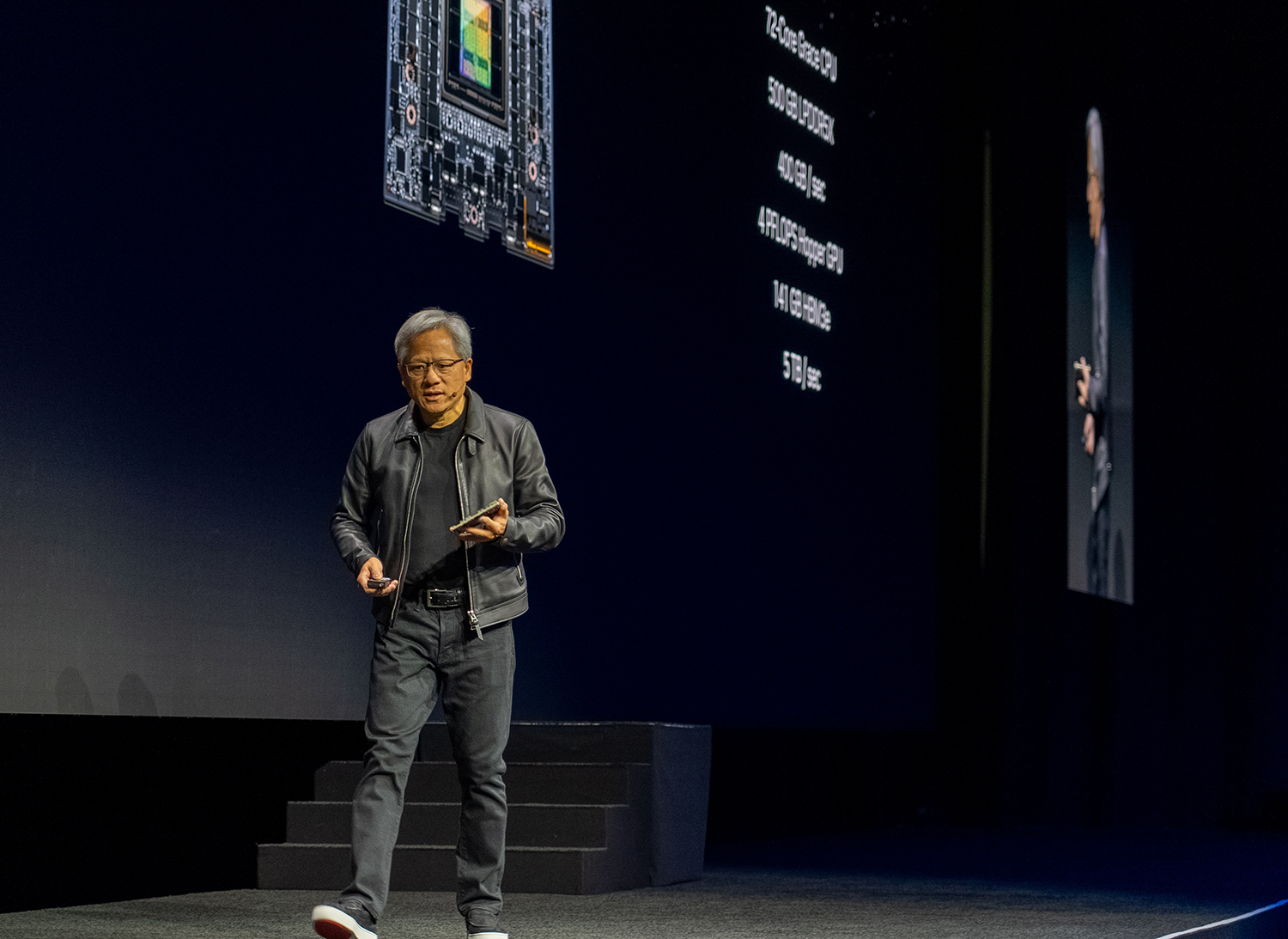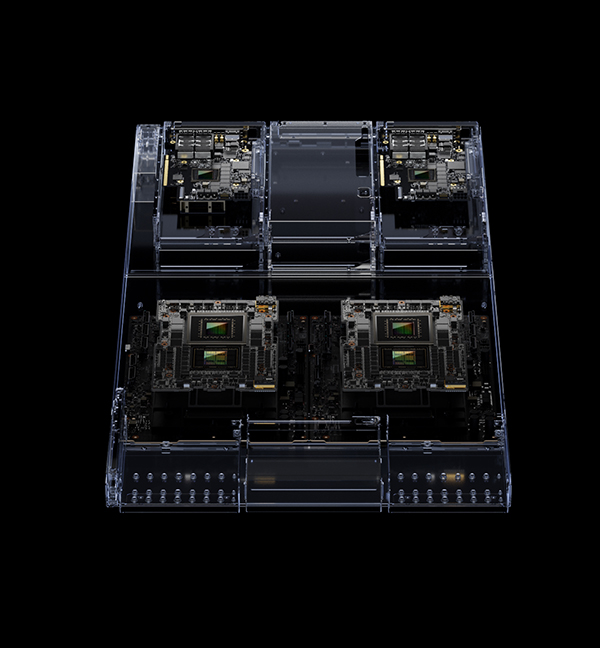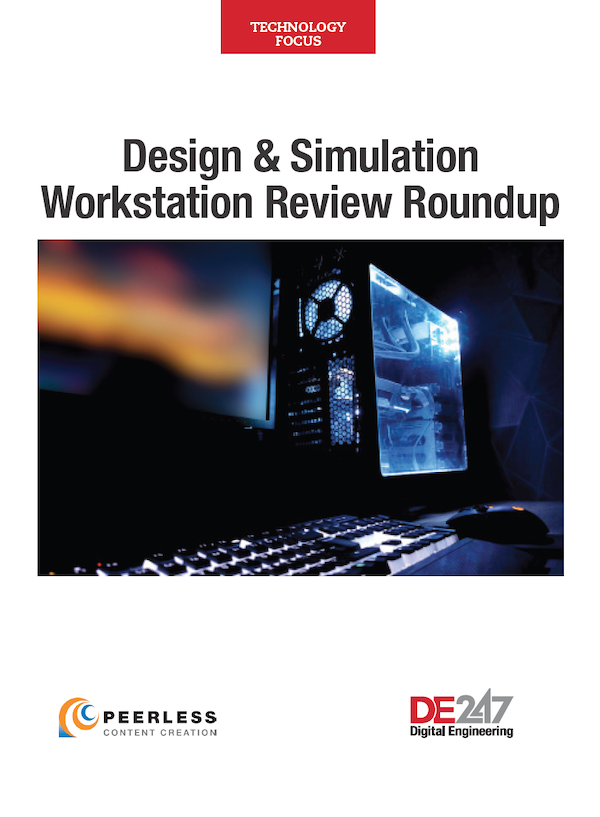
NVIDIA CEO Jensen Huang gives a special keynote at SIGGRAPH 20023. Photo by Andreas Psaltis © 2023. Courtesy of ACM SIGGRAPH
SIGGRAPH 2023: NVIDIA’s Jensen Huang Champions OpenUSD, Unveils New Superchip
NVIDIA Throws Its Full Weight Behind OpenUSD and Alliance for OpenUSD, Envisions AI-Powered Generative Design
August 21, 2023
This year, Los Angeles, the City of Movie Magic, hosts SIGGRAPH, the annual graphics and visualization conference where digital wizards and pixel pushers come together. SIGGRAPH 2023 marks the 50th anniversary of the show, making it a celebration of how far computer graphics have come. NVIDIA, a company that has been at the center of graphics evolution, is there to deliver a keynote talk.
Jensen Huang, CEO of NVIDIA, says the introduction of RTX in 2018 was a big gamble for the company. “You didn't know it at the time, but we did, that it was a bet-the-company moment. The vision of RTX was to bring forward real-time raytracing ... We had to bring together computer graphics and artificial intelligence (AI) for the very first time,” he says.
For the next phase, Huang is betting on OpenUSD, based on the Universal Scene Description (USD) file format originally developed by Pixar. USD is now the standard in NVIDIA Omniverse, the interactive simulation platform with built-in physics. Huang calls OpenUSD “a very big thing—a game changer.” He describes it as “a framework, a universal interchange for creating 3D worlds, for describing, for compositing, for simulation, for collaborating on 3D projects. OpenUSD is going to bring together the world onto one standard 3D interchange. It has the opportunity to do for the world and for computing what HTML did for the 2D Web.”
Along with Pixar, Adobe, Apple, and Autodesk, NVIDIA formed the nonprofit Alliance for OpenUSD (AOUSD) to foster the standardization, development, evolution, and growth of OpenUSD. The group aims to steer the direction of OpenUSD and also evangelize its use and adoption.
The New Lingua Franca of 3D
CAD-friendly rendering programs like KeyShot have already added USD support. Last June, NVIDIA CEO Huang appeared as a guest at Siemens's Xcelerator launch event, suggesting the two planned to work together on digital twin technologies and also interchange between Siemens's JT and USD.
“We've extended USD with real-time physics and offline physics. We added CAD to USD to connect USD to a whole new industry. We made it possible for USD to understand geospatial data, to recognize the curvature of the earth,” says Huang.
Bob Pette, VP/GM of Enterprise Visualization, said, “One of the first goals of the alliance is to try to nail down the specs so that we can recruit more members from the CAD space.”
NVIDIA is also looking at ChatGPT as the inspiration for how people might interact with USD. The company is releasing an Omniverse Cloud ChatUSD API. In a blog post, NVIDIA describes it as “a large language model (LLM) copilot for developers that can answer USD knowledge questions or generate Python-USD code scripts. ChatUSD is fine-tuned using USD functions and Python-USD code snippets from NVIDIA.”
“People who knows Python can do it today, but there's a lot of people who don't. They'd rather drag and drop or point and click,” said Pette.
Anticipating the growing importance of AI in design workflows, NVIDIA is releasing the NVIDIA AI Workbench, a collection of toolkit for developers to create, test, and customize pretrained generative AI models and LLMs on a PC or workstation. When appropriate, the setup can also be scaled up and moved to a data center, public cloud, or NVIDIA DGX Cloud.

Generative AI
SIGGRAPH 2023 attendees also got a glimpse of the new NVIDIA GH200 Grace Hopper Superchip. As the name suggests, the chip combines two architectures: Grace and Hopper. Showing a unit during his keynote, Hung says, “We created a brand new processor for the era of generative AI.”
Generative AI is exemplified by generative design tools, already available in some programs such as Autodesk Fusion 360 and SOLIDWORKS. At SIGGRAPH, NVIDIA and Dell hosted a meeting with automotive industry leaders to demonstrate new GPU-accelerated generative AI design tools, relying more on natural language and images as input to generate professional-looking automotive renderings.
In a blog post, Danny Shapiro, NVIDIA’s Vice President of Automotive, writes, “Design-oriented enterprises can use visual datasets and generative AI to assist their work across many fronts. This has already been achieved with coding tools such as GitHub Copilot—trained on billions of lines of code—and similarly promises to help compress lengthy design timelines.”
At SIGGRAPH, NVIDIA also announced the release of a new line of AI workstations featuring NVIDIA RTX 6000 Ada GPUs, NVIDIA Omniverse, and NVIDIA AI Enterprise Software. Also available are workstations configured with NVIDIA RTX 5000, 4500, and 4000, all available from workstation OEM partners.
“Few workloads are as challenging as generative AI and digitalization applications, which require a full-stack approach to computing,” said Bob Pette, VP of Professional Visualization at NVIDIA. “Professionals can now tackle these on a desktop with the latest NVIDIA-powered RTX workstations, enabling them to build vast, digitalized worlds in the new age of generative AI.”
More NVIDIA Coverage
Subscribe to our FREE magazine, FREE email newsletters or both!
About the Author
Kenneth Wong is Digital Engineering’s resident blogger and senior editor. Email him at kennethwong@digitaleng.news or share your thoughts on this article at digitaleng.news/facebook.
Follow DE





